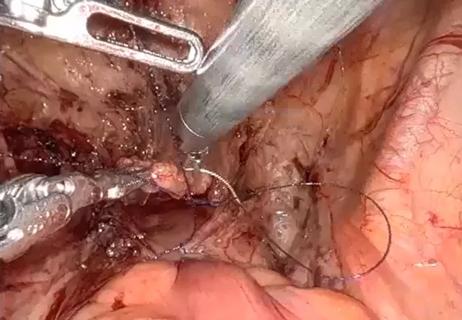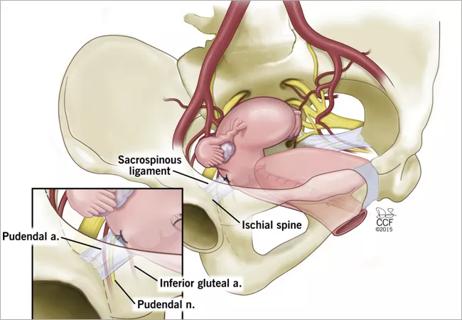Major complications are rare, study finds

A variety of surgical approaches are available for treating pelvic organ prolapse (POP), but there is limited evidence supporting the optimal approach. A study undertaken at Cleveland Clinic has helped to elucidate the most common complications and shed light on which patients are most likely to be affected.
Advertisement
Cleveland Clinic is a non-profit academic medical center. Advertising on our site helps support our mission. We do not endorse non-Cleveland Clinic products or services. Policy
“We identified the patient characteristics associated with increased risk and explored whether complications differed between approaches,” says Cleveland Clinic urogynecologist Katie Propst, MD.
POP is a common and significant cause of physical, emotional and psychological distress for older women. It’s also prevalent: By 2050, an estimated 44 million American women are expected to suffer from this pelvic floor disorder. This figure may be an underestimate, since embarrassment prevents many affected women from raising the issue with their medical provider.
An equally serious issue may be misinformation about efficacy and complication rates of colpopexy surgery that prevents some providers from referring patients for treatment — myths Dr. Propst and her colleagues hoped to clear up.
“It is not necessary for women with pelvic floor disorders to suffer,” she says. “There is a wide variety of effective treatments for POP that includes observation, physical therapy and pessary placement, in addition to surgery.”
Vaginal surgical approaches to treating POP can be divided into native-tissue repairs and mesh-augmented repairs. The favored approach is determined by patient symptoms, physical exam findings, relevant medical and surgical history and the surgeon’s area of expertise.
Although vaginal surgery is associated with a low risk of serious complications, each approach has unique risks that may change with concurrent hysterectomy. To gain a better understanding of these risks, Dr. Propst and colleagues conducted a database study of complication rates in patients undergoing intra- and extraperitoneal vaginal native tissue colpopexy with and without concurrent hysterectomy. Results were published in the International Urogynecology Journal.
Advertisement
To conduct this study, the researchers examined the outcomes of 9,546 colpopexies performed between 2014 and 2016 and listed in the American College of Surgeons National Surgical Quality Improvement Program database. Demographic data and operative characteristics were collected. The primary outcome was defined as one or more of 12 pre-selected 30-day postoperative adverse events. Patients were then stratified by type of colpopexy and whether or not concurrent hysterectomy was performed.
One in 10 women undergoing vaginal colpopexy for POP experienced a complication, with urinary tract infection (UTI) accounting for more than 60% of total postoperative complications. No differences in 30-day complication rates were seen across the different approaches to vaginal colpopexy with or without hysterectomy.
“UTIs are common after any form of pelvic reconstructive surgery,” says Dr. Propst. “When UTIs were excluded, the rate of complications in our study dropped in half to 5.4%.”
Excluding UTI, the most common postoperative complications were transfusion and superficial incision and organ surgical site infection.
“Here we have yet another study that shows a low rate of complications, especially serious ones, with vaginal prolapse repair,” says Dr. Propst.
Higher ASA class, minority race and extraperitoneal colpopexy with concurrent hysterectomy were associated with higher likelihood of experiencing a non-UTI postoperative complication.
Conversely, higher preoperative hematocrit, increasing age and increasing body-mass index were associated with decreasing odds of experiencing a non-UTI postoperative complication.
Advertisement
“It is important to understand factors that increase and decrease risk of post-operative complications, since this can impact the type of surgery selected and pre-operative counseling,” says Dr. Propst.
All Cleveland Clinic urogynecologists have expertise in the full compliment of surgical approaches to the of pelvic floor disorders. This allows them to tailor the approach to suit individual patients.
“The ultimate decision on the optimal surgical approach should be made via shared decision with the patient, taking her symptoms, exam findings and overall health into consideration,” says Dr. Propst.
Advertisement
Advertisement

Addressing the brain-body interplay can help patients achieve better outcomes

Specialist teams can improve outcomes and reduce risks

New guidelines let the patients steer the process

Post-op dilation regimen can be a challenge for long-term success

Study investigates the role of motivating forces

Lowers morbidity, improves quality of life

Cara King, DO, MS, outlines practices that can make all the difference

Rare pregnancy complication can lead to fetal demise